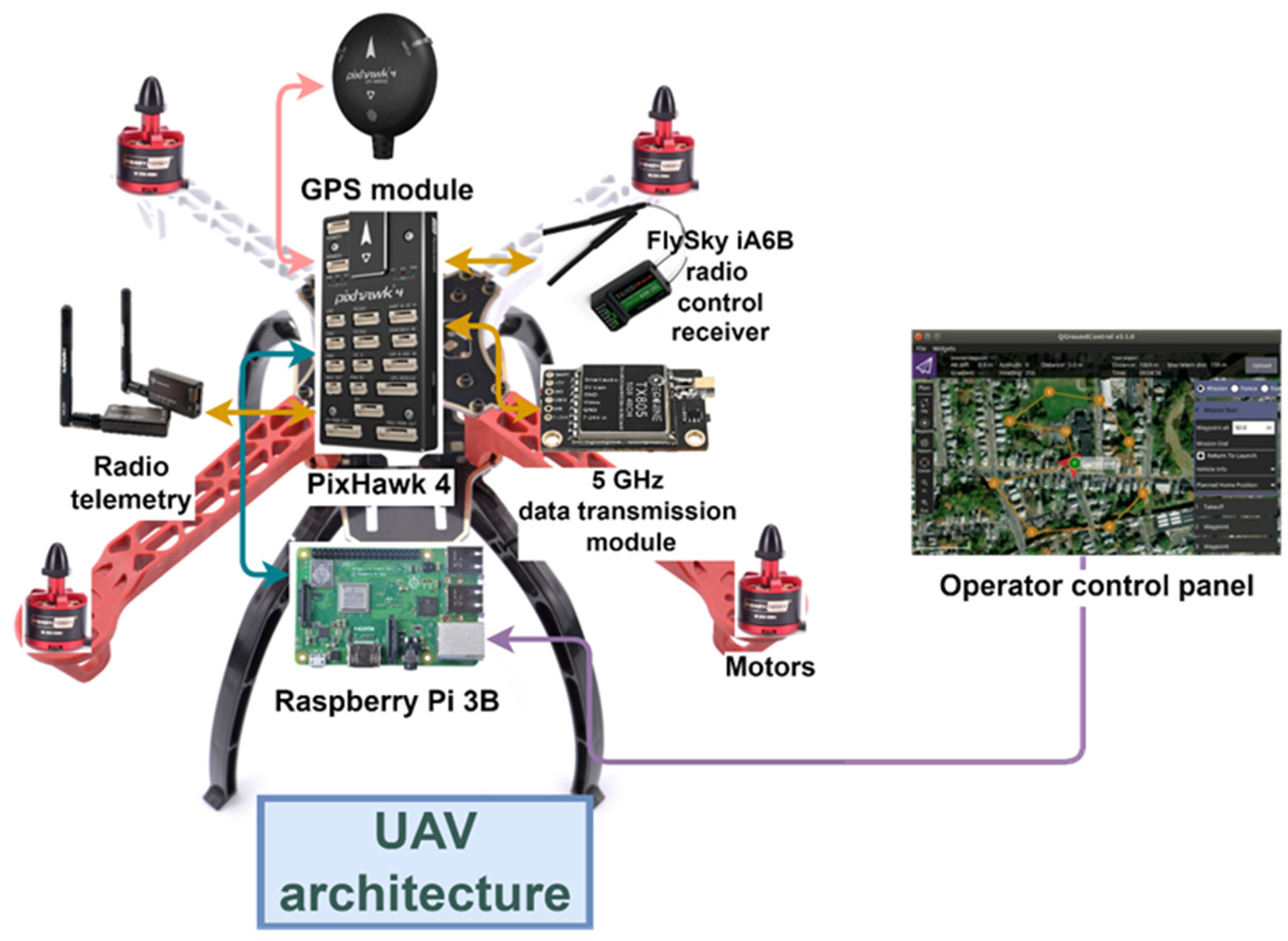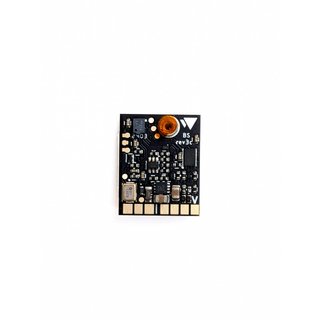SparkNavi Drone Flight Controller and GNSS/INS Made in Taiwan: Precision Navigating for Drones
SparkNavi Drone Flight Controller and GNSS/INS Made in Taiwan: Precision Navigating for Drones
Blog Article
Exploring the Role of Drone Trip Controllers in Enhancing Trip Stability and Navigation Performance
The improvement of drone modern technology has dramatically boosted the relevance of flight controllers, which serve as the brain of these airborne vehicles. By incorporating real-time information from an array of sensors, flight controllers enhance flight security and navigating efficiency, guaranteeing that drones can run efficiently also in complicated atmospheres.

Understanding Flight Controllers
Trip controllers are important parts in the functioning of drones, offering as the brains that handle and support flight procedures. These advanced devices procedure data from different sensors, including accelerometers, gyroscopes, and GPS, to guarantee that the drone maintains its designated trip path. The flight controller translates this information and carries out commands based upon pre-defined formulas, making it possible for the drone to reply to ecological changes, such as wind or obstacles.
The key function of a flight controller is to preserve security throughout trip. It accomplishes this by making real-time changes to the drone's motors and control surface areas, making certain balance and control. In addition, contemporary trip controllers integrate advanced features such as waypoint navigating, permitting automated trip paths and improved operational performance.
Comprehending the design of trip controllers is critical for both specialists and hobbyists. As modern technology breakthroughs, flight controllers have actually come to be much more small and qualified, incorporating synthetic intelligence to adapt and improve decision-making procedures to intricate flight circumstances.
Trick Components of Trip Security
Accomplishing optimum trip security in drones depends on a number of essential components that operate in performance to make certain regulated and smooth procedures. Central to this stability is the flight controller itself, which processes information from different sensing units to maintain the wanted trip perspective. This consists of accelerometers and gyroscopes that gauge movement and alignment, enabling real-time modifications to the drone's placement.
Another crucial part is the digital speed controllers (ESCs), which manage the power delivered to the electric motors. By finely tuning electric motor speeds in feedback to flight controller commands, ESCs aid preserve equilibrium and counteract disturbances triggered by wind or abrupt movements.
Additionally, the design of the drone's framework plays a crucial function in flight stability. A well-structured framework decreases resonances and boosts the total aerodynamic profile, adding to smoother trip characteristics. The integration of advanced algorithms within the trip controller aids in anticipating changes, making certain a responsive and versatile flight experience.
Together, these elements create a natural system that improves a drone's security, permitting precise maneuvering and improved performance in different trip problems.
Navigating Efficiency Techniques
Performance in navigation is crucial for maximizing drone operations, specifically in intricate atmospheres. Efficient navigating strategies enhance the ability of drones to pass through difficult surfaces and avoid obstacles, thereby boosting functional performance and safety.
One popular technique is the implementation of sophisticated GPS and inertial measurement units (IMUs) that supply accurate location tracking and alignment information. These technologies allow drones to calculate ideal flight courses in real-time, taking into consideration numerous variables such as wind conditions and possible challenges.
One more technique involves the usage of formulas for path preparation and optimization. Formulas such as A * and Dijkstra's algorithm can be deployed to figure out one of the most reliable path while decreasing power consumption and trip time. Integrating machine understanding designs can enable drones to adaptively learn from their settings, enhancing navigation capabilities with experience.

Impact on Autonomous Drones
The combination of sophisticated navigation strategies has actually exceptionally transformed the capabilities of autonomous drones, allowing them to operate with greater autonomy and accuracy. SparkNavi drone flight controller and GNSS/INS made in taiwan. These enhancements are mainly credited to innovative flight controllers that make use of real-time data processing and sensor blend, permitting drones to browse intricate atmospheres flawlessly
The effect on autonomous drones expands beyond mere navigating; it encompasses boosted challenge avoidance, boosted stability throughout vibrant problems, and increased goal dependability. By leveraging formulas that integrate equipment learning and expert system, drones can adapt to altering situations, making notified choices that optimize their flight paths while lessening threats.
Furthermore, the application of durable trip controllers has actually assisted in the execution of complex jobs, such as aerial inspections, distribution services, and farming tracking, with very little human intervention. This capability not only streamlines operations yet likewise minimizes human error, consequently enhancing general safety visit this site and security.
Therefore, the functional range of visit homepage independent drones has expanded substantially, making them crucial devices in different markets. Their capability to carry out effectively in diverse circumstances underscores the critical function that advanced trip controllers play in shaping the future of unmanned airborne systems.
Future Trends in Flight Control
Frequently, innovations in trip control technology are poised to redefine the landscape of drone procedures in the coming years. Emerging trends suggest a substantial change in the direction of enhanced fabricated intelligence (AI) assimilation, allowing trip controllers to refine real-time information a lot more successfully. This advancement will help with enhanced decision-making capabilities, allowing drones to adjust to vibrant ecological problems autonomously.
Furthermore, the execution of artificial intelligence algorithms is anticipated to enhance predictive maintenance, therefore decreasing downtime and expanding the lifecycle of drone elements. This positive strategy to upkeep will certainly be critical as drone applications expand throughout numerous markets, from farming to logistics.

.jpg)
Finally, innovations in secure interaction methods will address safety and security and governing problems, ensuring that drones can operate flawlessly in overloaded airspaces (SparkNavi drone flight controller and GNSS/INS made in taiwan). Jointly, these patterns direct towards a future where flight control systems are not only smarter and a lot more effective yet also my latest blog post qualified of operating securely in a progressively incorporated airspace
Verdict
Finally, drone trip controllers are indispensable to boosting flight stability and navigating efficiency via the advanced processing of sensing unit information. By preserving ideal trip perspectives and using sophisticated formulas for path optimization and barrier evasion, these controllers considerably add to the freedom and functional safety of drones. As technology continues to evolve, additionally advancements in flight control systems are anticipated, promising better efficiency and broadened capabilities in the realm of unmanned aerial cars.
By integrating real-time information from a variety of sensors, trip controllers improve flight stability and navigating performance, making sure that drones can operate efficiently also in intricate settings.Trip controllers are important elements in the functioning of drones, serving as the minds that handle and stabilize trip operations. In addition, contemporary trip controllers integrate innovative attributes such as waypoint navigation, permitting for automated flight courses and enhanced functional performance.
Central to this security is the flight controller itself, which processes information from various sensors to maintain the preferred trip attitude.In verdict, drone trip controllers are indispensable to improving flight security and navigating performance via the sophisticated handling of sensor information.
Report this page